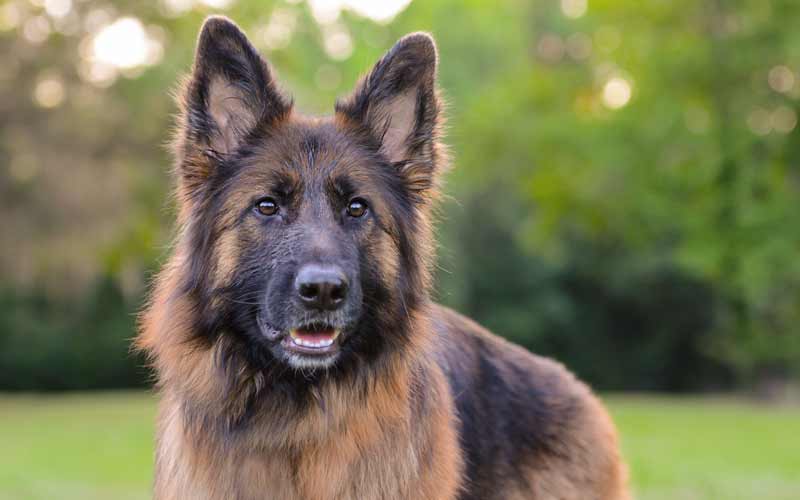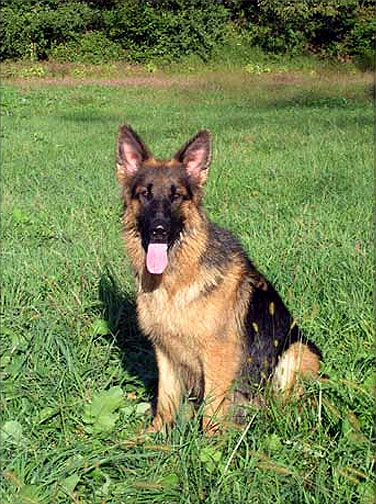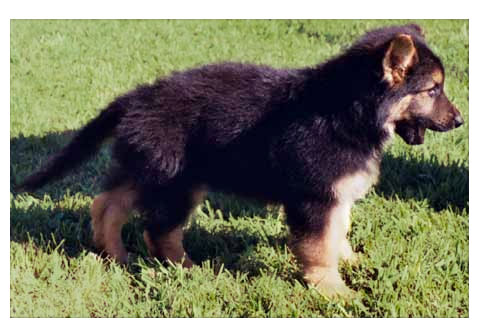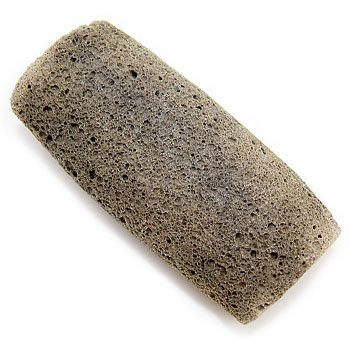Long-Haired German Shepherds

Every now and then, I am asked about long haired (coated) German Shepherds. The photo above is a picture of a very good-looking long haired Shepherd. This is considered a breed fault, though I find these animals very good-looking. One of my old competition dogs (Casper) was a long hair. People constantly asked me what kind of dog he was. Everyone commented on how good-looking he was.
The long hair gene is a recessive gene so you will find these dogs within certain bloodlines. If a long haired Shepherd is bred, he will produce long haired Shepherds. So you will not find many breeders that are happy to get a coated dog in a litter. They will try and breed this factor out of their kennel bloodline.

It is possible to have two normal coated dogs (phenotypically) that produce long haired puppies. This is because they each carry the recessive gene. It would be important not to breed these two dogs again. The fact is that both dogs could be bred to other animals that do not carry the gene and both could potentially produce litters without any long coats.
German Shepherds have 2 coats, an outer and undercoat. The true long hairs do not have the undercoat. So their outer coat seems very silky and smooth looking because it does not have the body of the undercoat to deal with.

When some puppies are 8 to 10 weeks old, they may look like they are going to be coated dogs because they are big fluff balls, actually very cute. But at about 14 to 16 weeks, all puppies blow their puppy coat and they will begin to develop the normal coat of their adult lives. This is where a lot of these fluffy dogs lose that look and begin to look like a normal German Shepherd. On the other hand, if a puppy blows his puppy coat and has tufts of hair in his ears or between his toes, you can be fairly certain the dog will end up being a coated dog. Unless you are a breeder, this should not be a concern to you. There is no correlation between a coat and a dog's working ability, although in Europe you will see a lot of police service dogs are coated dogs. The reason for this is that they are sold to the police for less money. The coat has no effect on their working ability.
It has been a number of years since I have had a long haired puppy in any litters. There is always the possibility that one can pop up when a new animal from outside the bloodline is selected for breeding.










Ask Cindy.